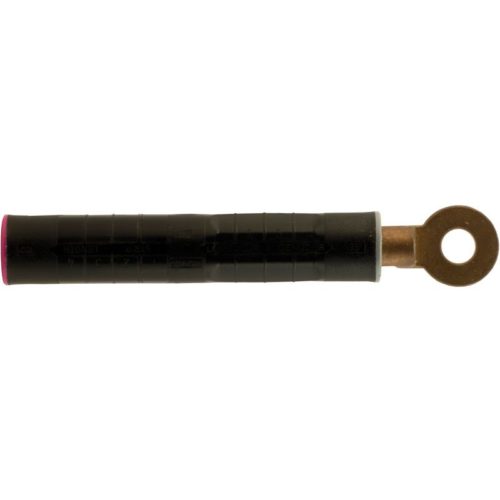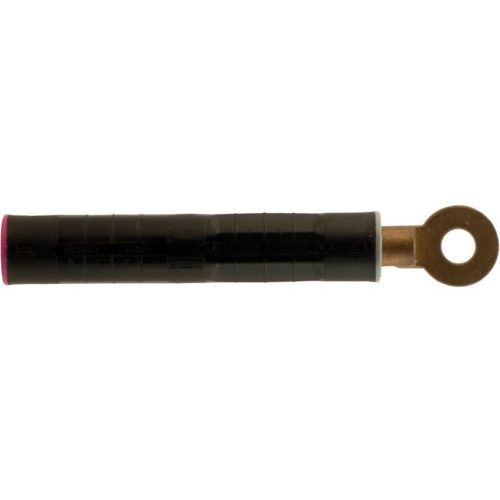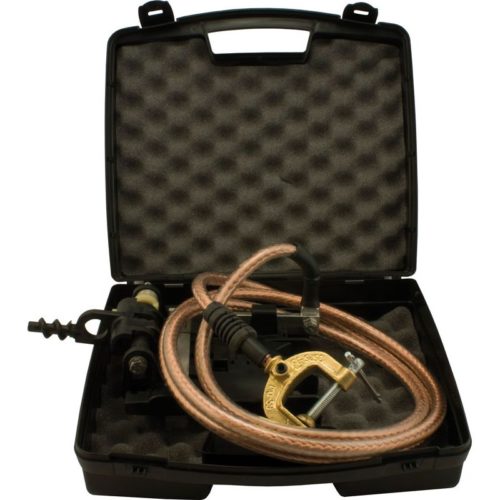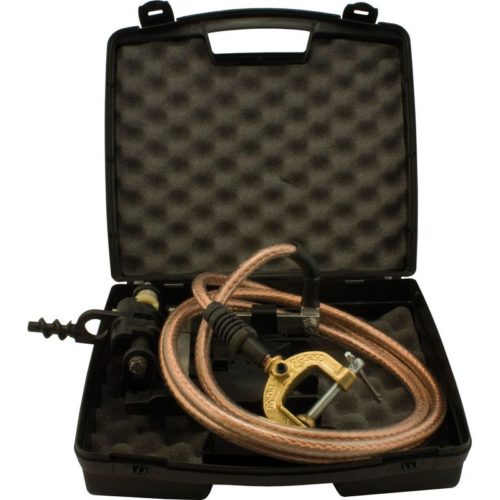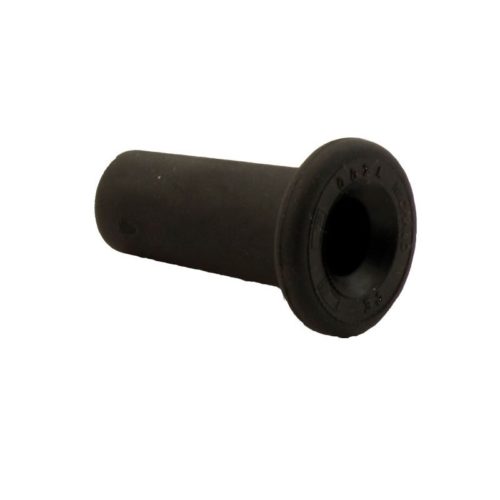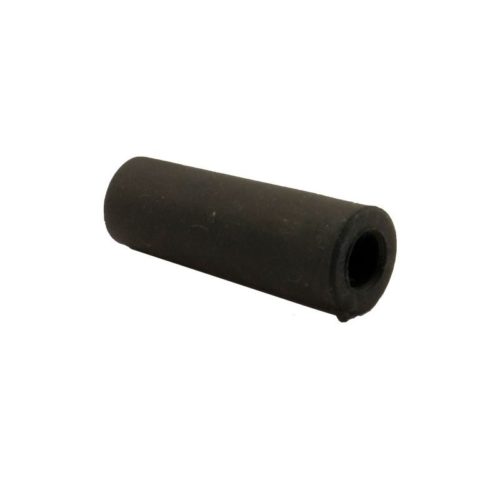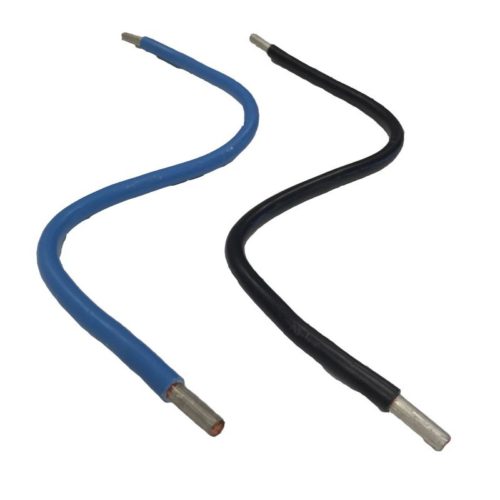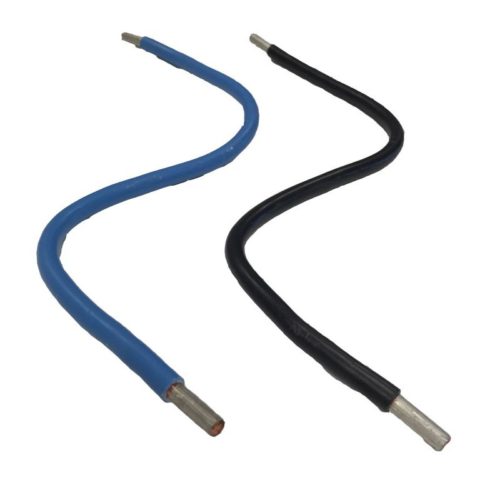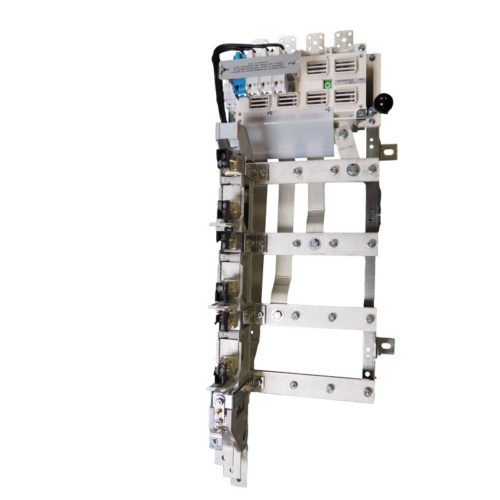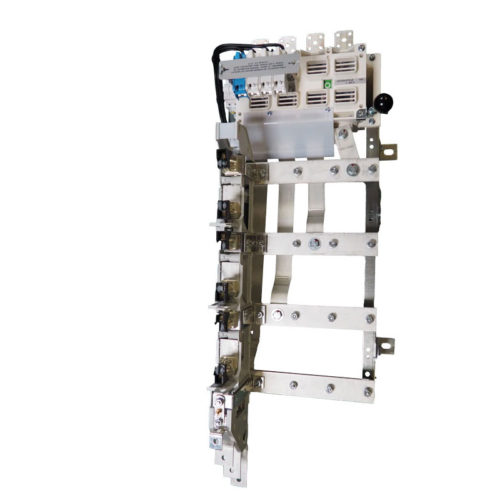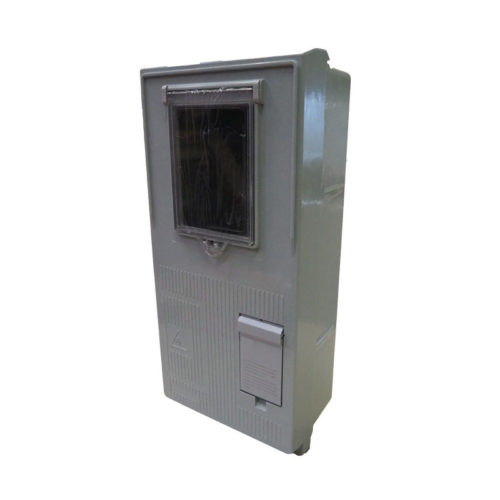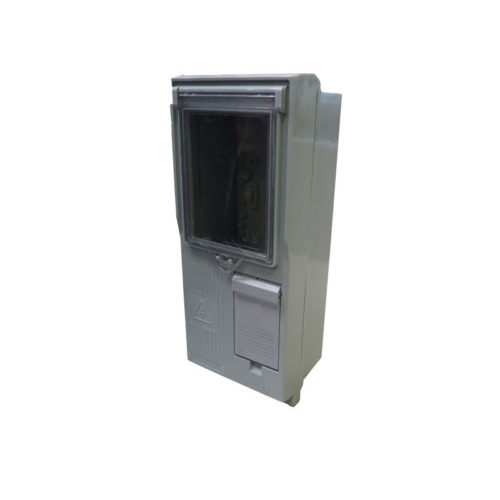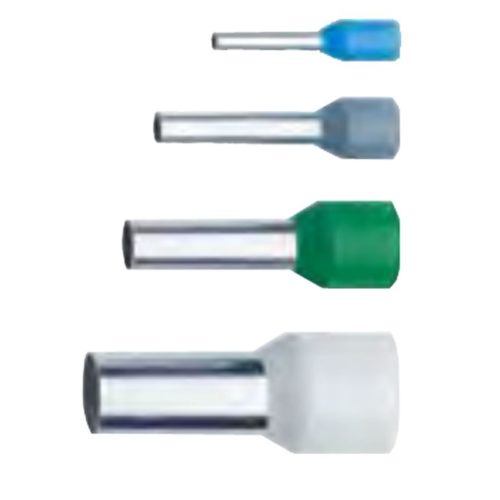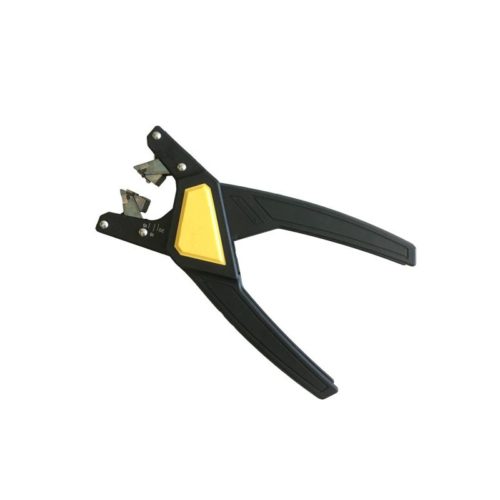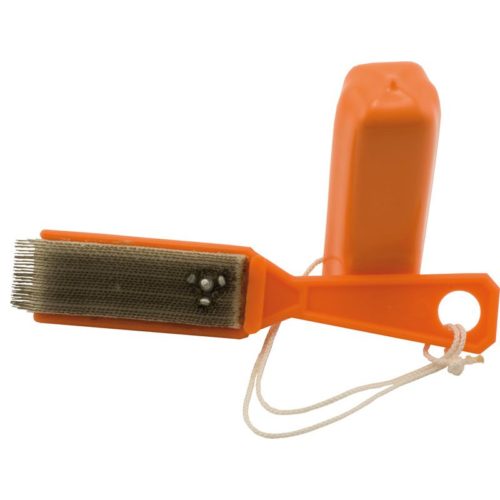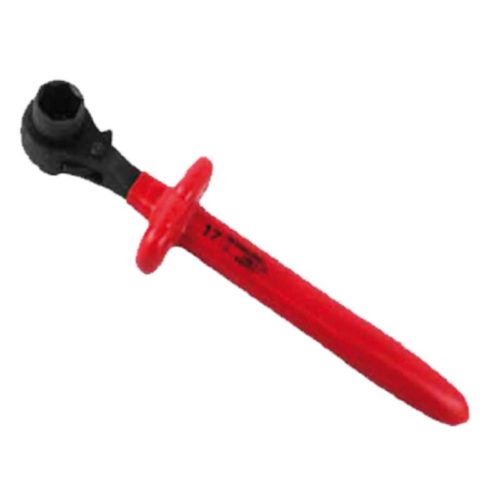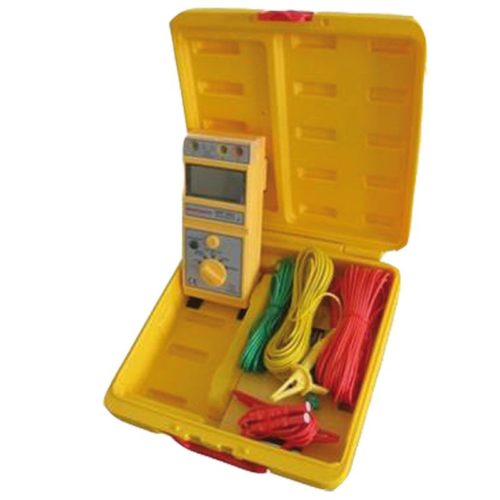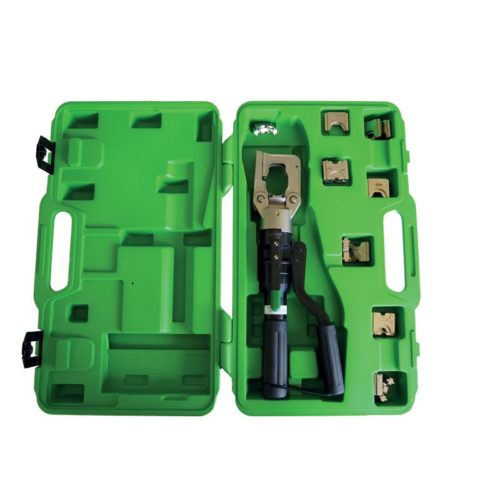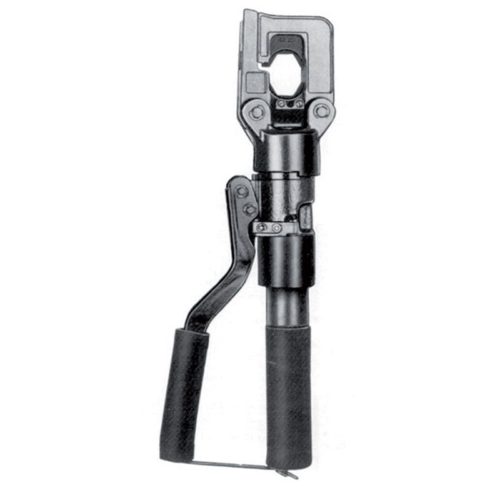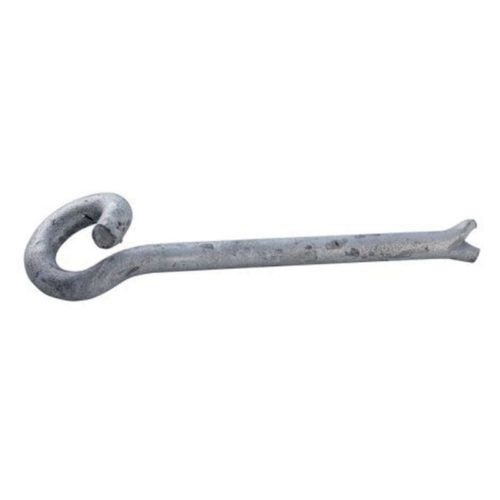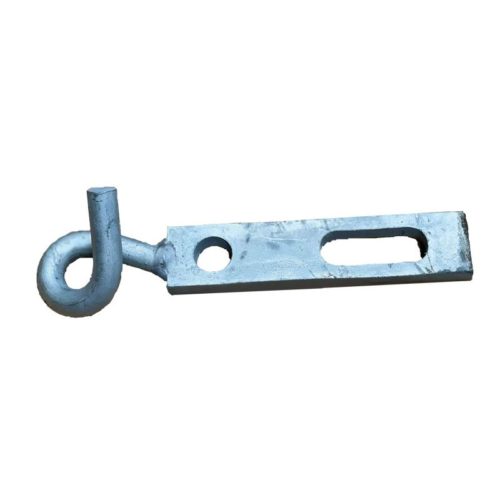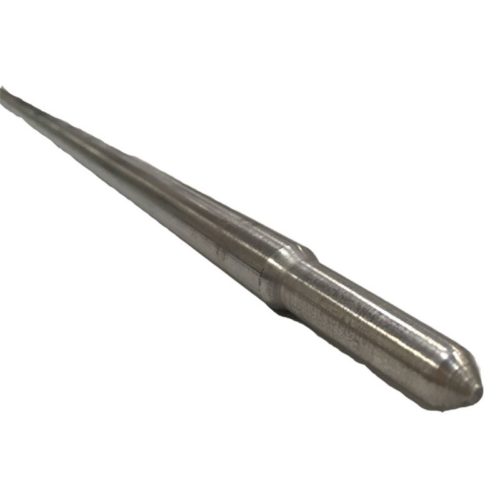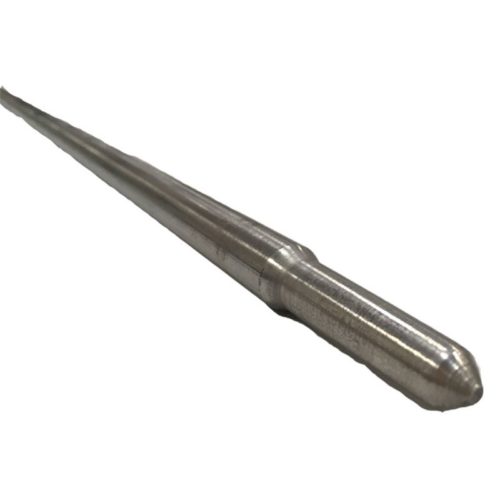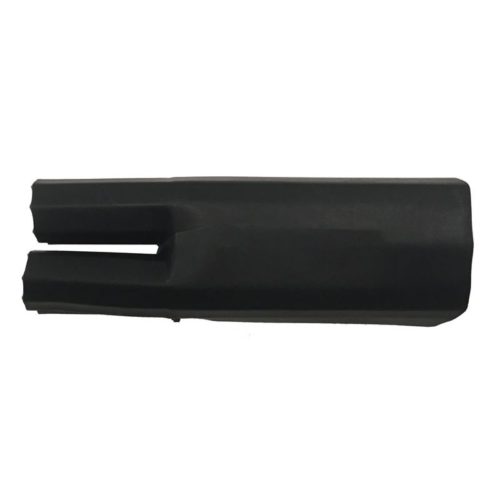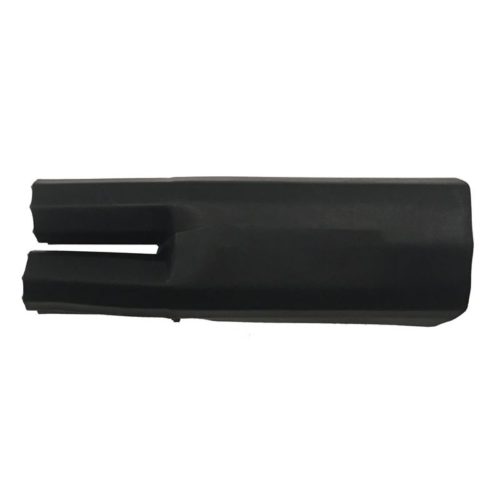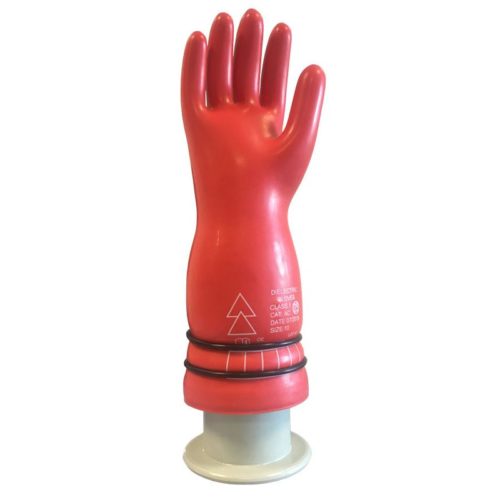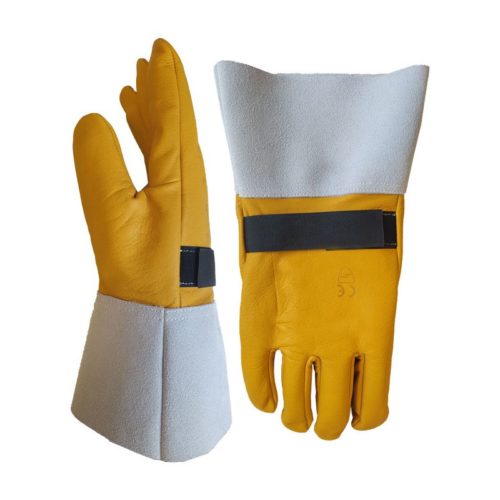-
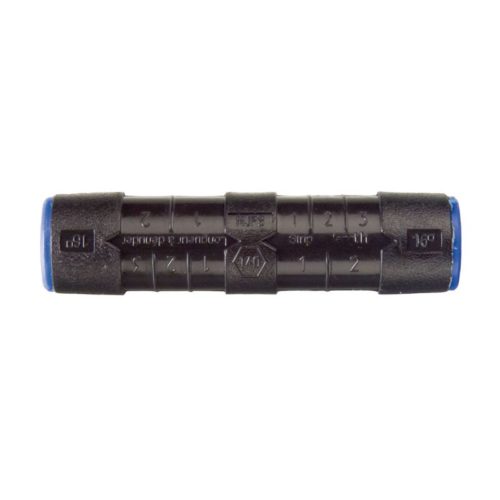
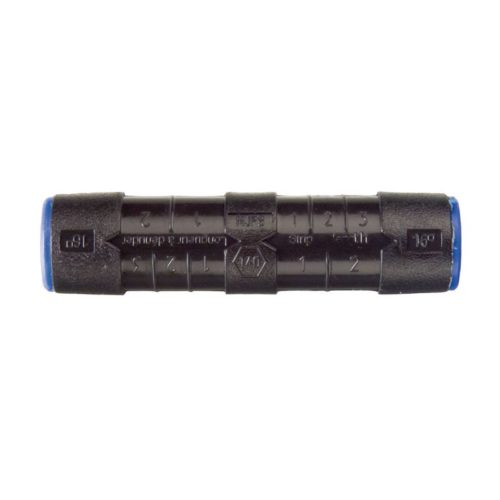 This preinsulated sleeve is designed for the connection of copper or aluminium stranded core overhead insulated conductors with traction or with no mechanical load. It is used for the installation, repair or modification of low voltage service lines. The junction can be established between two conductors of equal or unequal sections. All combinations of sections are possible. The section of the cables ranges goes from 6 up to 35mm².
This preinsulated sleeve is designed for the connection of copper or aluminium stranded core overhead insulated conductors with traction or with no mechanical load. It is used for the installation, repair or modification of low voltage service lines. The junction can be established between two conductors of equal or unequal sections. All combinations of sections are possible. The section of the cables ranges goes from 6 up to 35mm². -
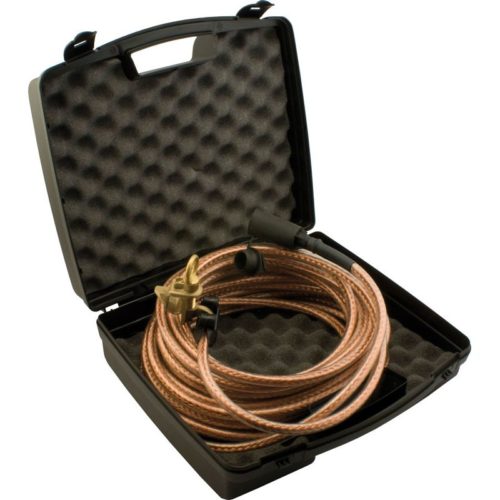
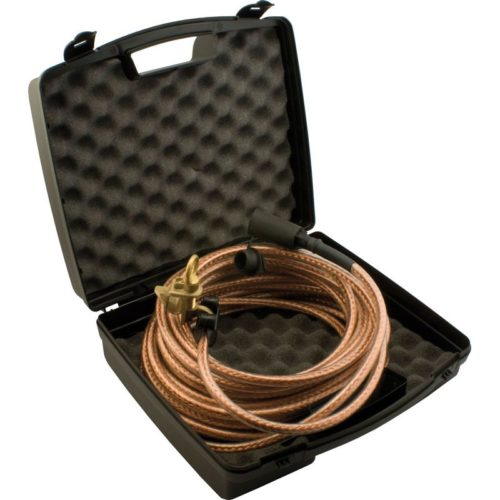 This device is designed for shortcircuiting and earthing the low voltage A.B.C. (Aerial Bundled Conductors). It is connected to a connector for measures and short-circuiting (type CMCC). This equipment is used for earth system a low voltage A.B.C. (Aerial Bundled Conductor). It is connected on shortcircuiting device linked to CMCC connectors (for measures and shortcircuiting).
This device is designed for shortcircuiting and earthing the low voltage A.B.C. (Aerial Bundled Conductors). It is connected to a connector for measures and short-circuiting (type CMCC). This equipment is used for earth system a low voltage A.B.C. (Aerial Bundled Conductor). It is connected on shortcircuiting device linked to CMCC connectors (for measures and shortcircuiting). -
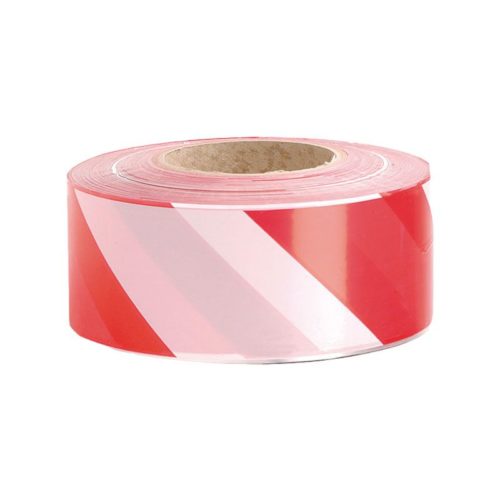
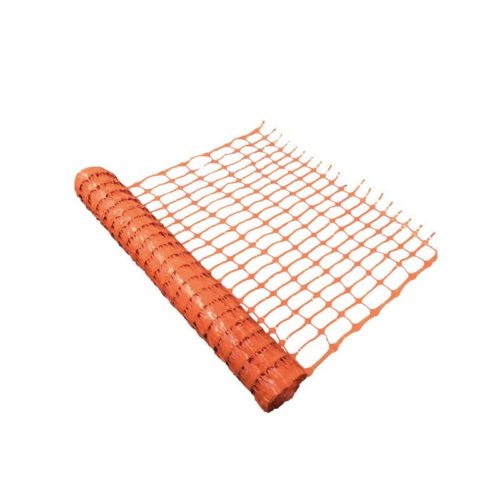 The warning tape enables to secure and delimit a work area on a construction site. The safety barrier enables to secure and delimit a work area on a construction site. The netting is made of stretch mesh and offers a high tensile strength allowing extension without any risk of deformation or tearing.
The warning tape enables to secure and delimit a work area on a construction site. The safety barrier enables to secure and delimit a work area on a construction site. The netting is made of stretch mesh and offers a high tensile strength allowing extension without any risk of deformation or tearing. -
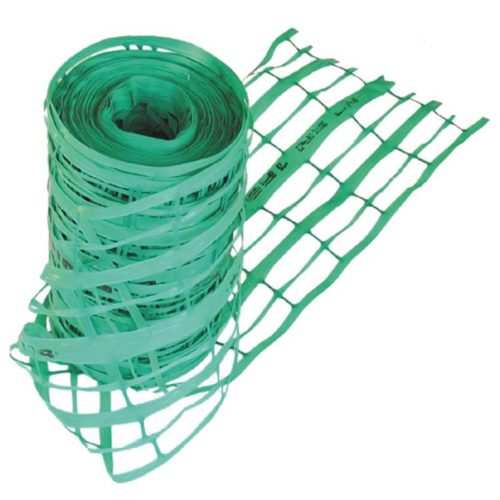
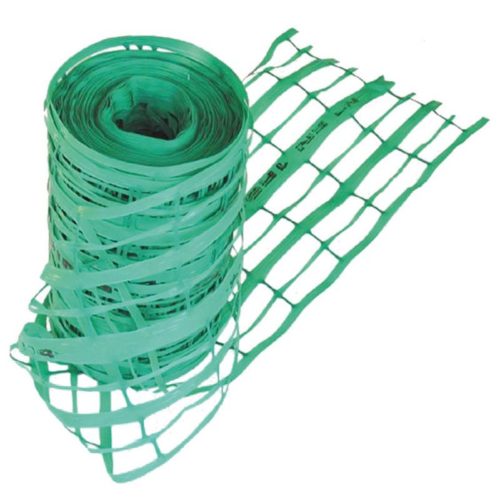 The protection plate roll (PPR) is designed to protect underground networks from extraction (pipes and/ or cables). It can be used for underground network under low load, engineering structure crossing, or in area of high density network. The warning netting is designed to indicate the presence of low voltage power line cables buried in the ground.
The protection plate roll (PPR) is designed to protect underground networks from extraction (pipes and/ or cables). It can be used for underground network under low load, engineering structure crossing, or in area of high density network. The warning netting is designed to indicate the presence of low voltage power line cables buried in the ground. -
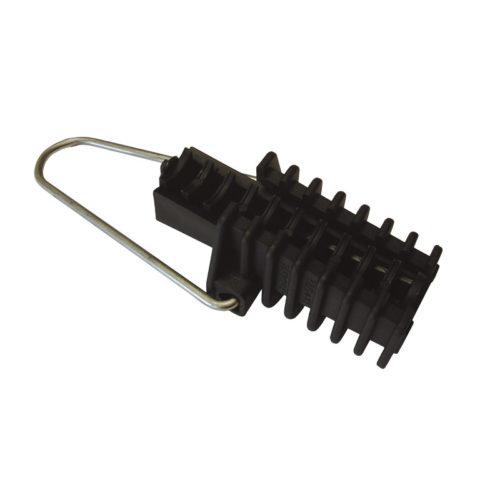
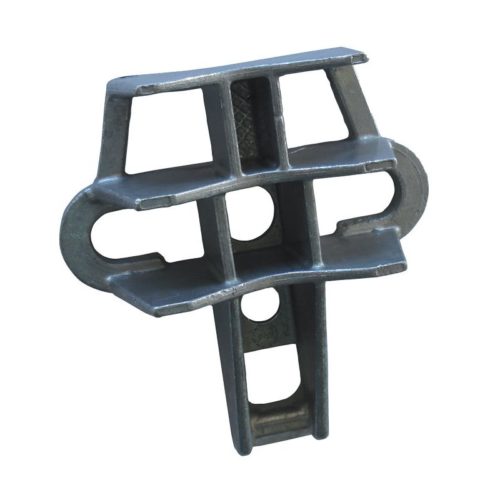 The cutout sleeve makes it possible to secure the connection of the phase conductor and to protect the installation against electrical faults that may occur during illegal connections on the concentric cable. This cutout sleeve can receive a 22×58 fuse up to 100A or a neutral tube. The fraud preventing connector is used to make a tap connection between aerial networks. Once implemented, this connector cannot be dismantled. The accessories allow the anchoring of the concentric cable, both at the top of the pole and at the bottom of the meter. The U508 anchoring clamp accepts single and three-phase cables, while the K310 accepts only single-phase cables.
The cutout sleeve makes it possible to secure the connection of the phase conductor and to protect the installation against electrical faults that may occur during illegal connections on the concentric cable. This cutout sleeve can receive a 22×58 fuse up to 100A or a neutral tube. The fraud preventing connector is used to make a tap connection between aerial networks. Once implemented, this connector cannot be dismantled. The accessories allow the anchoring of the concentric cable, both at the top of the pole and at the bottom of the meter. The U508 anchoring clamp accepts single and three-phase cables, while the K310 accepts only single-phase cables. -
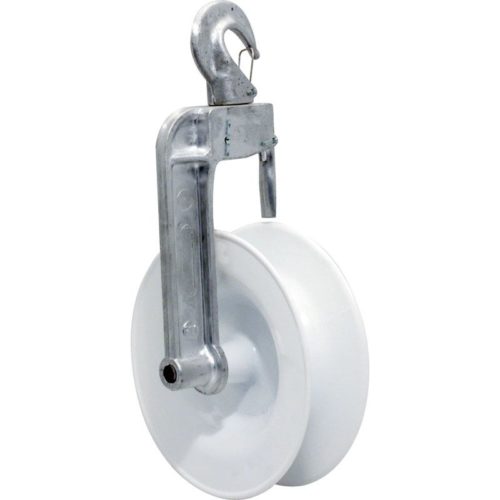
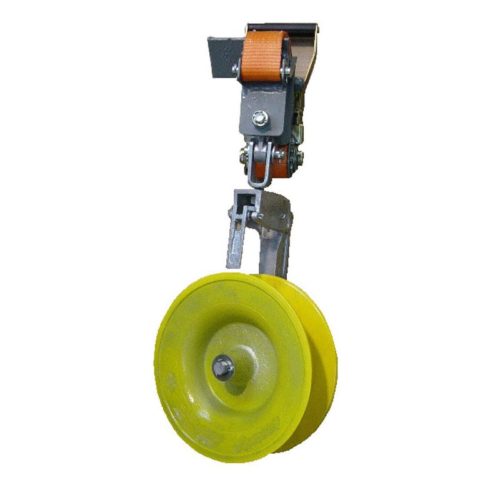 The pulley is designed to receive low voltage A.B.C. (Aerial Bundled Conductors) for unwinding and pulling operations. The mechanical winch is designed to pull conductors of a low voltage power line. Light and small, it can be used for all types of cable adjustments, in particular on top of supports. It can be used also for lifting loads, stowing poles and other applications. The overhead comealong clamp is designed to pull, retain and stretch bare or insulated conductors of a power line. Three models are available according to the type of conductors to be implemented: - Bare steel or aluminium cable, - A.B.C. (Aerial Bundled Conductors) type neutral messenger, - A.B.C. type fully supported. The wire-strainer is designed to pull conductors on a low voltage electrical line manually. These climbers are designed to help fitters climbing along poles and facilitate work at height. Sold in pair.
The pulley is designed to receive low voltage A.B.C. (Aerial Bundled Conductors) for unwinding and pulling operations. The mechanical winch is designed to pull conductors of a low voltage power line. Light and small, it can be used for all types of cable adjustments, in particular on top of supports. It can be used also for lifting loads, stowing poles and other applications. The overhead comealong clamp is designed to pull, retain and stretch bare or insulated conductors of a power line. Three models are available according to the type of conductors to be implemented: - Bare steel or aluminium cable, - A.B.C. (Aerial Bundled Conductors) type neutral messenger, - A.B.C. type fully supported. The wire-strainer is designed to pull conductors on a low voltage electrical line manually. These climbers are designed to help fitters climbing along poles and facilitate work at height. Sold in pair. -
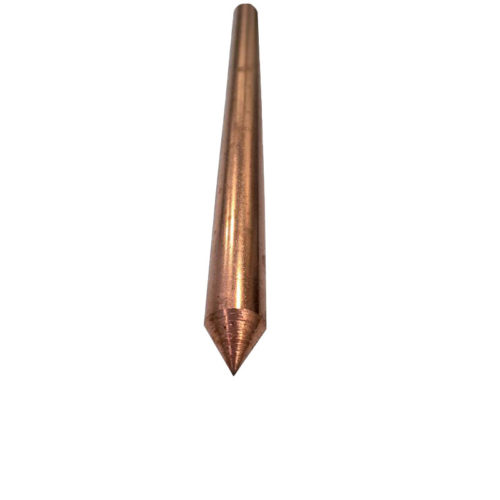
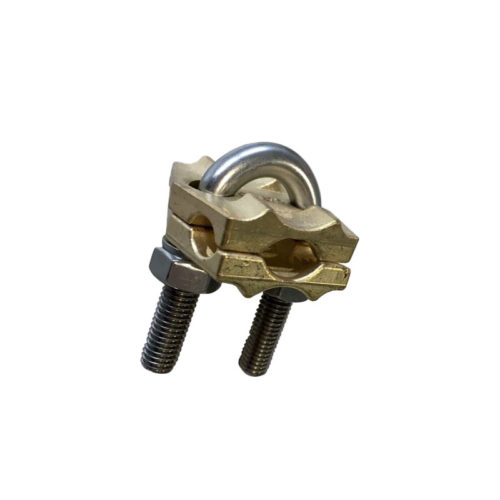 This earth rod is used for the power networks earth system. The copper coating made by electrolytic process gives a resistance to corrosion as well as a good conductivity. The reference standards are EN 50 164-2 and EN 62 561-2. The brass clamp with stainless steel bolts is designed to establish a connection between the earth rod and the conductor. The cable can be fixed radially or axially through the "U" bolt clamp. The round connection clamp can be in bronze. These brass driving spikes and heads are designed to protect the earth rod during the installation. They enable to preserve the copper coating and its technical features. The taper coupling is made of brass. It allows the junction between two unthreaded earth rods with nominal diameter 16mm.
This earth rod is used for the power networks earth system. The copper coating made by electrolytic process gives a resistance to corrosion as well as a good conductivity. The reference standards are EN 50 164-2 and EN 62 561-2. The brass clamp with stainless steel bolts is designed to establish a connection between the earth rod and the conductor. The cable can be fixed radially or axially through the "U" bolt clamp. The round connection clamp can be in bronze. These brass driving spikes and heads are designed to protect the earth rod during the installation. They enable to preserve the copper coating and its technical features. The taper coupling is made of brass. It allows the junction between two unthreaded earth rods with nominal diameter 16mm. -
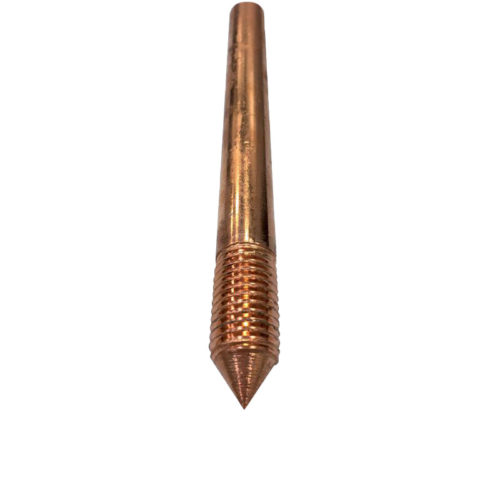
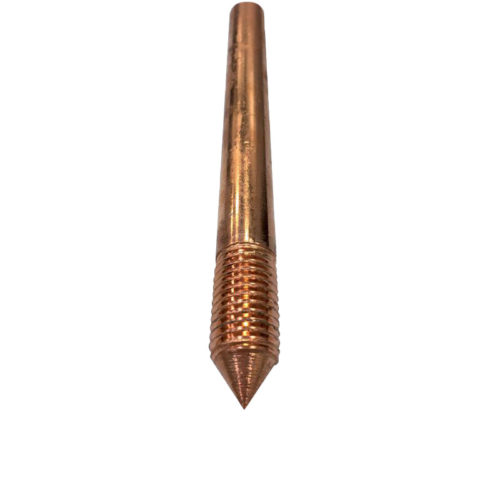 This earth rod is used for the power networks earth system. The thread on both ends makes the earth rod lengthening possible. The copper coating made by electrolytic process gives a resistance to corrosion as well as a good conductivity. The reference standards are EN 50 164-2 and EN 62 561-2. This brass clamp with stainless steel bolts is designed to establish a connection between the earth rod and the conductor. The cable can be fixed radially or axially through the "U" bolt clamp. The brass driving spikes and heads are designed to protect the earth rod during the installation. They enable to preserve the copper coating and its technical features. The brass threaded couplings enable to join two rods and get a deeper earth system.
This earth rod is used for the power networks earth system. The thread on both ends makes the earth rod lengthening possible. The copper coating made by electrolytic process gives a resistance to corrosion as well as a good conductivity. The reference standards are EN 50 164-2 and EN 62 561-2. This brass clamp with stainless steel bolts is designed to establish a connection between the earth rod and the conductor. The cable can be fixed radially or axially through the "U" bolt clamp. The brass driving spikes and heads are designed to protect the earth rod during the installation. They enable to preserve the copper coating and its technical features. The brass threaded couplings enable to join two rods and get a deeper earth system. -
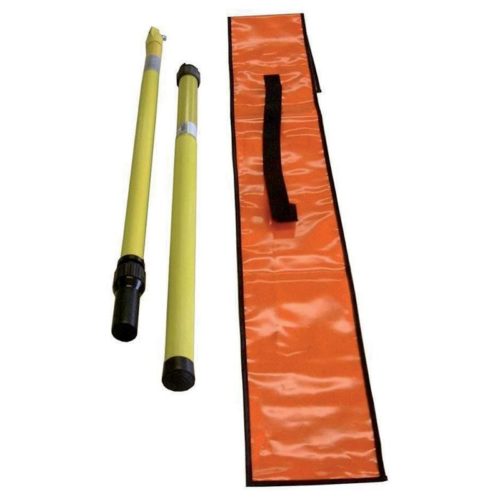
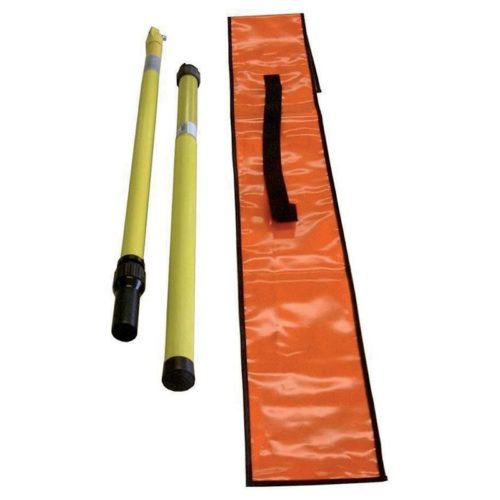 This telescopic stick is used to operate a fuse switch disconnector, remotely from the ground level, but also to check that there is no voltage or for the earthing thanks to accessories sold apart. Each model is equipped with a notched universal U-shaped terminal end. To operate a Fuse Switch Disconnector (FSD) remotely from the ground level, the notched universal U-shaped threaded terminal end is fixed to the operating stick. The F210 end can be used to operate a Fuse Switch Disconnector manually, without loss of handling thanks to its handle shape.
This telescopic stick is used to operate a fuse switch disconnector, remotely from the ground level, but also to check that there is no voltage or for the earthing thanks to accessories sold apart. Each model is equipped with a notched universal U-shaped terminal end. To operate a Fuse Switch Disconnector (FSD) remotely from the ground level, the notched universal U-shaped threaded terminal end is fixed to the operating stick. The F210 end can be used to operate a Fuse Switch Disconnector manually, without loss of handling thanks to its handle shape. -
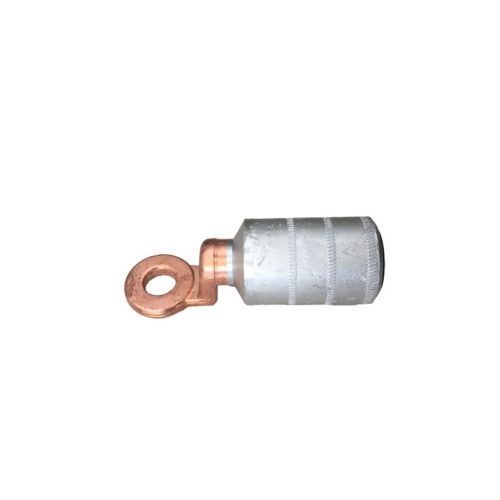
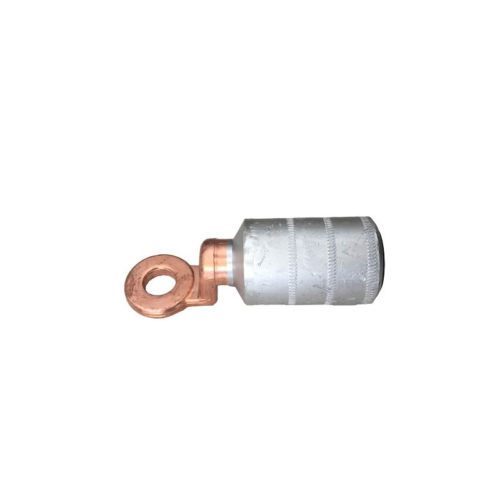 The tubular lug is designed to connect cable. It is made of tinplated copper (by electrolysis). It is manufactured with an inspection hole and socketing. It is implemented with hexagonal compressed connection. It allows copper and aluminium conductors. This lug meets the requirement of the NFC 20-130 standard. The friction welded lug is used to connect aluminium bare conductors to copper equipment terminals. It is used for industrial or indoor applications. This lug is implemented by crimping and out of traction. This lug meets the requirement of the NF C 63-061 standard. The Al/Cu tinned aluminium lug is used to connect aluminium bare conductors to copper equipment terminals. It is applied with a deep crimping.
The tubular lug is designed to connect cable. It is made of tinplated copper (by electrolysis). It is manufactured with an inspection hole and socketing. It is implemented with hexagonal compressed connection. It allows copper and aluminium conductors. This lug meets the requirement of the NFC 20-130 standard. The friction welded lug is used to connect aluminium bare conductors to copper equipment terminals. It is used for industrial or indoor applications. This lug is implemented by crimping and out of traction. This lug meets the requirement of the NF C 63-061 standard. The Al/Cu tinned aluminium lug is used to connect aluminium bare conductors to copper equipment terminals. It is applied with a deep crimping.
